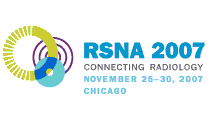
Abstract Archives of the RSNA, 2007
SSK01-05
Impact of Two Different Vacuum-assisted Biopsy (VAB) Systems on the Management of Patients with MRI Only Suspicious Lesions
Scientific Papers
Presented on November 28, 2007
Presented as part of SSK01: Breast Imaging (Interventional)
Simone Schrading MD, Presenter: Nothing to Disclose
Birgit Simon, Abstract Co-Author: Nothing to Disclose
Eva Wardelmann MD, Abstract Co-Author: Nothing to Disclose
Michael Braun MD, Abstract Co-Author: Nothing to Disclose
Hans H. Schild MD, Abstract Co-Author: Research Consultant, Dainippon Sumitomo Pharma Co, Ltd
Christiane Katharina Kuhl MD, Abstract Co-Author: Nothing to Disclose
To report our experiences with two different systems for MR-guided VAB, and to investigate their impact on the clinical management of patients with MR-only lesions
During period A (01/2005 – 07/2006), the 10G hand held Vacora system was used; during period B (08/2006 –12/2006), the 9G ATEC Suros system. We recorded the time to perform the procedure, and the operator confidence with which the biopsy was concluded. The impact of the two systems on patient management, i.e. on the decision how a given MR-only lesion was clarified (VAB or lesion localization) was investigated
During the 18 months of period A, 49 MR guided VABs (9 with multiple VAB sites) were performed. During the 6 months of period B, 73 VABs (23 with multiple sites) were performed. Average time to perform a single-site biopsy was 69 min for period A and 34 min for period B. Time to perform multiple biopsies in a patient was 89 min for period A and 62 min for period B. The time gain during period B was caused by the faster sampling rate of the biopsy system, the larger tissue volume removed and, by the accuracy with which the biopsy cavity was depicted and thus, the confidence with which the procedure could be completed. Average size of lesions during period A was 19 mm vs. 11 mm during period B. During period A, a total 170 MRI-only lesions required biopsy, 121(72%) of which were clarified by localization, and 49(28%) by VAB. This yields a monthly average of 10 localizations and 2 VABs. During period B, a total 91 MRI only lesions required biopsy, 18(20%) of which were clarified by localization, and 73(80%) by VAB. This yields a monthly average of 3 localizations and 10 VAB
The availability of a potent VAB system influences the way with which MR-only lesions are clarified. With improved technology, smaller lesions can be biopsied in less time and with higher operator confidence. This translates into a major shift of the management of patients with MR-only lesions, away from localization, towards an increased use of MR-guided VAB
New systems for MR guided VAB can completely replace localization and excisional biopsy even of small MR-only lesions and, thus, help to avoid unnecessary surgery.
Schrading, S,
Simon, B,
Wardelmann, E,
Braun, M,
Schild, H,
Kuhl, C,
Impact of Two Different Vacuum-assisted Biopsy (VAB) Systems on the Management of Patients with MRI Only Suspicious Lesions. Radiological Society of North America 2007 Scientific Assembly and Annual Meeting, November 25 - November 30, 2007 ,Chicago IL.
http://archive.rsna.org/2007/5009458.html

